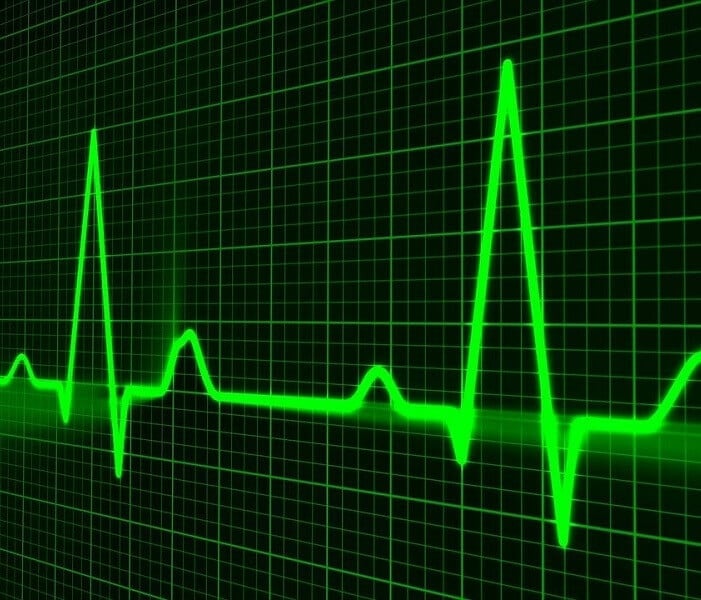6 mins read
Understanding Cholesterol

- What is cholesterol?
- What’s the difference between good and bad cholesterol?
- Low-density lipoprotein (LDL)
High levels of cholesterol in our system increase the risk of heart attacks and stroke.
But there are different types of cholesterol and not all function in the same way. For example, what’s the difference between good and bad cholesterol. In this article, we’re going to explore cholesterol and discuss what it really means for our health.
What is cholesterol?
Cholesterol is a fatty substance, often referred to as a lipid, present in our blood. Cholesterol may also be described as waxy and although it receives bad press, our body needs some cholesterol to keep it healthy.
The liver naturally produces cholesterol which is required for the production of vitamin D, bile acids and steroid hormones. The liver can produce up to 2 grams of cholesterol every day, but this may be reduced if we eat foods which are cholesterol rich.
There are two main types of cholesterol, commonly referred to as good and bad cholesterol. When we think of the bad cholesterol, it’s this type which is responsible for the increased risk of cardiovascular disease, heart attacks and strokes. Bad cholesterol can become lodged in our arteries, causing them to become blocked and this is not good for our overall health.
What’s the difference between good and bad cholesterol?
Because cholesterol is a fat, it doesn’t mix well with our blood which largely consists of water, so it travels in the blood via a protein called a lipoprotein. Therefore, a lipoprotein is the combination of cholesterol and protein. The two main types are:
- High-density lipoprotein (HDL)
- Low-density lipoprotein (LDL)
High-density lipoprotein (HDL)
HDL or HDL cholesterol is what is more commonly known as good cholesterol. In truth, HDL is the carrier of cholesterol rather than the cholesterol itself. HDL is known as good because it transports excess cholesterol found in the blood to the liver where it can be broken down and removed from the body.
Low-density lipoprotein (LDL)
LDL is the opposite of good cholesterol in that it transports cholesterol to the cells from the liver. Too much LDL and it can stick to the sides of blood vessels causing them to become clogged. The narrowing and stiffening of the blood vessels are what causes heart attacks and strokes and is known as atherosclerosis.
Previously, LDL was the main measure for bad cholesterol, but recent research has shown that other components of bad cholesterol need to be taken into consideration, including:
- Intermediate-density lipoprotein (IDL)
- Very low-density lipoprotein (VLDL)
- Lipoprotein (a)
Together, these are referred to as non-HDL cholesterol.
What happens if you have too much bad cholesterol?
Too much bad cholesterol in your blood is not good for your health. If there is an excess of bad cholesterol then it can stick to the artery walls which continues to build up and can eventually block them completely or make it more difficult for blood to flow through them.
If you have a high total cholesterol level, this may indicate there is a lot of bad cholesterol in your blood. High levels of bad cholesterol can be caused by many things. Some causes are within our control such as our lifestyle, while others, like ageing and family history cannot be controlled and we may need some intervention to help keep our levels under control.
High cholesterol can affect anyone even if you’re young, slim, healthy and active. Therefore, you may have high cholesterol and not even know, often there aren’t any symptoms, either. Instead, it increases the risk of conditions which do have symptoms, some of which can be life-changing or even life-threatening, such as:
- Heart attacks
- Angina
- Coronary heart disease
- Heart failure
- Stroke
- Mini stroke (TIA)
- Vascular dementia
- Peripheral arterial disease
What should cholesterol levels be?
Cholesterol levels are measured in millimoles per litre or mmol/L. So, your result will tell you how much cholesterol is present in every litre of blood.
Total cholesterol levels should be:
- 5mmol/L or less in healthy adults
- 4mmol/L in high-risk adults
If your LDL levels are being measured, they should be:
- 3mmol/L or less in healthy adults
- 2mmol/L or less in high-risk adults
HDL levels should be above 1mmol/L. A low level of HDL can also increase your risk of heart disease as there is not enough in circulation to remove the bad cholesterol from the blood and body.
You may be recommended for testing by your GP if you fit any of the following criteria:
- Been diagnosed with coronary heart disease, stroke, mini-stroke or peripheral arterial disease
- Have a family history of cardiovascular disease
- You are overweight or obese
- Are over the age of 40
- Have a close family member with a history of cholesterol-related disease
- Have high blood pressure or diabetes
- Have another medical condition
Even if you don’t fit the above criteria, you can monitor and track your own cholesterol levels with the cholesterol check from Forth. The convenient at-home test gives you an insight into your different cholesterol levels and helps you to make changes to reduce any risks to your health.
How to lower your cholesterol levels
Having high cholesterol doesn’t need to be the end of the world. If the increased levels are being caused by your lifestyle choices there are plenty of changes you can make to help bring your cholesterol back under control.
Diet
Saturated fat is a major cause of high cholesterol, so eating less of it can be really beneficial. Saturated fat is found in foods like:
- Butter
- Cheese
- Cakes
- Biscuits
- Lard
- Fatty meats
- Bacon
- Sausages
- Burgers
- Kebabs
- Pastries and pies
- Coconut oil
- Palm oil
Instead, you should try to swap foods high in saturated fat for those with unsaturated fat. Unsaturated fats can increase HDL levels and so, in turn, can reduce bad cholesterol levels in the blood. Foods which have high unsaturated fat contents are:
- Oily fish
- Mackerel
- Salmo
- Sardines
- Avocados
- Olive, sunflower and rapeseed oil
- Nuts
- Almonds
- Peanuts
- Cashews
- Seeds
- Olives
Another way to reduce your cholesterol levels is to eat a good diet with lots of fibre. The Mediterranean Diet has long been championed as a diet which is good for your heart. It consists of high amounts of vegetables, legumes, fruits, cereals, grains, nuts, beans, fish and unsaturated fats. The diet also has a low intake of meat and dairy products and so it is seen as a good way to keep our heart healthy.
Exercise
Staying active is another great way to keep your cholesterol levels where they need to be. Regular Exercise increases the amount of good cholesterol in the body which transports the bad cholesterol back to the liver to be broken down.
Exercise has many other benefits too, including:
- Helps you to lose weight or maintain a healthy weight
- Lowers blood pressure
- Reduces the risk of diabetes
- Lowers LDL cholesterol levels
- Helps to keep your mind healthy
Quit Smoking
Smoking affects cholesterol levels more than you may have thought. Cigarettes contain a chemical called acrolein which prevents HDL cholesterol from transporting the bad fatty deposits back to the liver. Therefore, this increases the chance of having high cholesterol levels and narrowed arteries.
Smoking is a huge risk factor for both heart attacks and strokes. Therefore, it is important to give up smoking to reduce this risk. There are many ways to stop smoking and you can get advice from your GP, too.
Once you’ve made some changes and stuck to them, you may choose to take another test to monitor the impact these changes are having and to track your health. Although cholesterol instantly sounds bad, the good type is needed by the body and you can increase your levels by regularly exercising. If lifestyle changes don’t work for you or your condition is familial there are medications available which can help to lower cholesterol. Maintaining a healthy lifestyle is key to controlling your cholesterol and reducing your risk of disease.
- Health scores calculated
Close
Article references
-
Barter, P et al. (2007). HDL Cholesterol, Very Low Levels of LDL Cholesterol, and Cardiovascular Events. The New England Journal of Medicine: 357, pp 1301-1310.
-
Sarzynski, M, A et al. (2018). Effects of Increasing Exercise Intensity and Dose on Multiple Measures of HDL (High-Density Lipoprotein) Function. Arterioscler Thromb Vasc Biol.
-
Yusuf, S et al. (2016). Blood-Pressure and Cholesterol Lowering in Persons without Cardiovascular Disease. The New England Journal of Medicine: 374, pp 2032-2043.
This information has been medically reviewed by Dr Thom Phillips
Thom works in NHS general practice and has a decade of experience working in both male and female elite sport. He has a background in exercise physiology and has published research into fatigue biomarkers.

Dr Thom Phillips
Head of Clinical Services
Related articles
Like this article? Here are some more based on similar topics.





